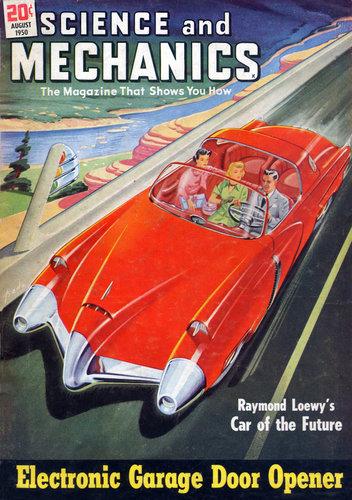AeroMobil Self-Flying Car Previews At SXSWAeroMobil Self-Flying Car Previews At SXSW
AeroMobil has introduced a flying car, and soon the car will fly itself. The company detailed its plans at SXSW.


6 Connected Vehicles Steal The Show At MWC
6 Connected Vehicles Steal The Show At MWC (Click image for larger view and slideshow.)
AeroMobil might have the most controversial product in the history of mankind -- the self-driving, self-flying, flying car.
AeroMobil is not quite there yet. But it showed off its latest regular old flying car at SXSW --as if there's such a thing as a regular old flying car. Look at this thing. It is gorgeous.
It will do almost 100 MPH on the highway. When it hits 81, it can take off. It has a driving range of 435 miles. Interestingly enough, it can go even farther in the air, with a range of 545 miles. It is made of a special steel and carbon coating and can take off and land on short runways because the wings can change their "angle of attack."
For a couple hundred thousand Euros, one can be yours in 2017.
Obviously, that's a specialized market for a well-heeled and well-trained crowd with a driver's license and a pilot's license. The interesting part comes in when the things can fly themselves.
The main problem with the flying car, and flying in general, is that it is really hard. It takes many hours to learn to do, it takes discipline, and even a minor fender bender means giant metal objects fall from the sky. Imagine all the cars that are on the highway flying around in the air instead. We can't even trust people not to text while driving. Imagine those same people in airborne vehicles.
That's why we don't have flying cars.
But if cars flew themselves? No fender benders. No discipline. On one level, it is the perfect solution to the issue. It makes roads three dimensional, so instead of widening lanes of traffic, we can fit many more cars in the same space, alleviate traffic congestion, and, if all goes well, reduce accidents.
So let's assume for just a moment that it all works. We still have mechanical errors causing planes to drop from the sky. Generally, at peak hours, there are slightly fewer than 20,000 planes in the air at any given time. There are 253 million cars on the road. Put even a tiny fraction of them in the air, and you are looking at new safety issues. Even a tenth of 1% of those cars set airborne would double the number of flying things in our airspace.
[Read about the sweetest job perks in IT.]
Like any technology, the price for flying cars is bound to go down. What happens when the price is reachable for just the average rich person? There are 34.8 million millionaires in the world, more than 15 million in the US alone. How about if 10% of these folks buy one? That's 1.5 million flying cars in the air every day. And we had people worried about the FCC rules of allowing 50-pound drones in the air?
I'm not trying to kill this idea. Frankly, I love it. If it was within my means, I'd buy a flying car today, and a self-flying one as soon as possible. I believe we will work out the mechanical issues. Eventually the air-traffic control issues won't seem as big a deal. Self-driving carmakers will have to begin to work that issue out first. Millions of cars at 55 MPH create a more complex problem than a handful at flying speeds.
Still, it is daunting, isn't it? The future is scary, I suppose. But the future is happening. We're all going have a robot maid and flying cars any day now. Get ready.
Attend Interop Las Vegas, the leading independent technology conference and expo series designed to inspire, inform, and connect the world's IT community. In 2015, look for all new programs, networking opportunities, and classes that will help you set your organization’s IT action plan. It happens April 27 to May 1. Register with Discount Code MPOIWK for $200 off Total Access & Conference Passes.
About the Author
You May Also Like






